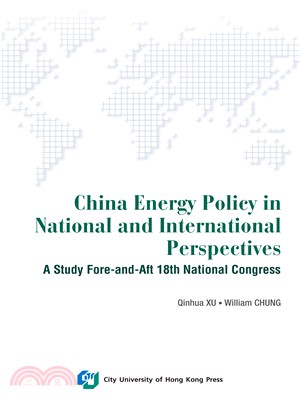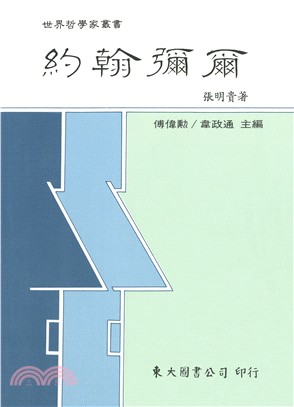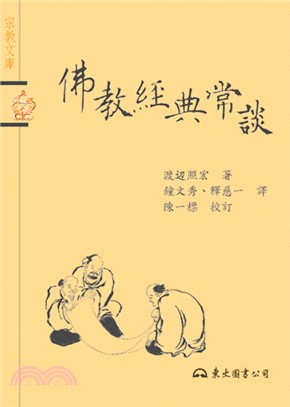相關商品
商品簡介
作者簡介
目次
書摘/試閱
商品簡介
INTRODUCTION
China’s economic growth during the last couple of decades has been impressive. Around the turn of the millennium, China’s energy situation changed drastically. Before 2000, about 96% of China’s energy demand was met domestically. Since 2001, however, this position of near self-reliance has changed. With steadily increasing energy demand, China’s need for foreign energy has grown. Today, China is the world’s biggest energy consumer and emitter of greenhouse gases.
This book summarizes China’s energy and environmental policies with special reference to the 2011–2015 Twelfth Five-Year Plan (FYP). By reviewing and investigating China’s recent efforts and to resolve the misunderstandings by addressing the key criticisms of its energy policies, this book presents both the domestic approaches and the international agreements in which China participates.
This comprehensive overview of the current state of China’s energy situation will serve as a foundation for future analysis.
China’s economic growth during the last couple of decades has been impressive. Around the turn of the millennium, China’s energy situation changed drastically. Before 2000, about 96% of China’s energy demand was met domestically. Since 2001, however, this position of near self-reliance has changed. With steadily increasing energy demand, China’s need for foreign energy has grown. Today, China is the world’s biggest energy consumer and emitter of greenhouse gases.
This book summarizes China’s energy and environmental policies with special reference to the 2011–2015 Twelfth Five-Year Plan (FYP). By reviewing and investigating China’s recent efforts and to resolve the misunderstandings by addressing the key criticisms of its energy policies, this book presents both the domestic approaches and the international agreements in which China participates.
This comprehensive overview of the current state of China’s energy situation will serve as a foundation for future analysis.
作者簡介
THE AUTHOR
Dr.Qinhua XU is Associate Professor at the School International Studies of the Renmin University of China. She is also the Director of the Centre for International Energy and Environment Strategy Studies of the University. She has been working for more than 20 years in various academic and research institutions in Asia, Europe and the United States.
Dr. William CHUNG is Associate Professor of Management Sciences at City University of Hong Kong. He earned his PhD in Management Sciences at the University of Waterloo, Canda, in 1999. His personal research interests mainly focus on developing mathematical methodologies for energy-environmental policy problems, benchmarking methods for energy consumption performance of buildings, and decomposition analysis of energy intensity.
Dr.Qinhua XU is Associate Professor at the School International Studies of the Renmin University of China. She is also the Director of the Centre for International Energy and Environment Strategy Studies of the University. She has been working for more than 20 years in various academic and research institutions in Asia, Europe and the United States.
Dr. William CHUNG is Associate Professor of Management Sciences at City University of Hong Kong. He earned his PhD in Management Sciences at the University of Waterloo, Canda, in 1999. His personal research interests mainly focus on developing mathematical methodologies for energy-environmental policy problems, benchmarking methods for energy consumption performance of buildings, and decomposition analysis of energy intensity.
目次
CONTENTS
1. Introduction
2. Facts of Energy and Economy in China
3. Energy System and Policies beforethe Twelfth Five-Year Plan
4. Outlook of Twelfth Five-Year Plan Energy Policy Effects
5. Evolution of China’s Foreign Energy Policy
6. Twenty Years of China’s Foreign Energy Policy (1993–2012)
7. Conclusion
1. Introduction
2. Facts of Energy and Economy in China
3. Energy System and Policies beforethe Twelfth Five-Year Plan
4. Outlook of Twelfth Five-Year Plan Energy Policy Effects
5. Evolution of China’s Foreign Energy Policy
6. Twenty Years of China’s Foreign Energy Policy (1993–2012)
7. Conclusion
書摘/試閱
PREFACE
We live in a world of turmoil. Acid rain, forest decline, earthquakes and tsunamis are just some of many natural catastrophes that have become part of the daily life of people worldwide. It is believed that some of these are due to climate change, while some are not.
Whatever the causes of these natural disasters, people try to fight the causes of climate change. In 2009 the whole world came together in Copenhagen to discuss these issues and tried to find a way for everyone to work together towards making the world a better place to live in for everyone. This alone was a mighty accomplishment, regardless of what else came out of it. No matter how huge the differences between those nations, leaders from every corner of the world gathered to address issues of high complexity and vital importance. As one of the biggest economies in the world, China participated to do its part in working towards a solution.
Willing to act as a responsible stakeholder, China is becoming a key and active contributor in international treaty arrangements. It is not surprising, therefore, that closer relations between the BASIC countries (China, India, Brazil and South Africa) were one of the byproducts of the Copenhagen Summit. Especially China–India cooperation on environmental issues grew stronger through the “Copenhagen spirit.” Not only on the international scene, but in its national situation also China is constantly improving. This can be quite challenging. With an enormously growing economy and the need to maintain these growth rates, China has to balance its green efforts in a sustainable way. This high-wire balancing act leads to a “Chinese way of action,” which incorporates China’s green efforts as well as economic stability.
China has made tremendous efforts to push its clean energy sector and has had significant success in reaching its reduction targets and increasing its commitment to R&D projects in that area. Consequently, today, Chinese enterprises are the world’s dominant players in hydro power, and the largest installers of wind power and solar energy plant. Nevertheless, China is still a developing nation which needs the support of the international community to continue its progression to a low-carbon economy. The fact is that China is faced with a challenging reality and future, in which it will be ever harder to strike the balance between the rapidly increasing demand for energy, the environmental limits and the need to develop its economy to meet its people’s unlimited demands.
In the first months of 2013, Beijing suffered from a very serious pollution haze. Even the delegates to the National People’s Congress (NPC) in March were critical of the government over the city’s poor air and water quality, also expressing deep-felt concern about the unavailability of information on the environment. From top-down and bottom-up, people all ask for the government to take measures.
In order to make these measures significant, China has established a very efficient and multi-layered concept to deal with the economy’s growing energy demand. Not only does the government introduce and monitor requirements for energy efficiency, but it also closes facilities that cannot reach those requirements. Financial incentives are given, information is distributed at all levels of government, a lot is done to educate the public on these issues, and pilot projects are started to look for new solutions.
Before realizing the details and the intentions of these measures, other nations, notably the industrialized nations, often criticize the significance and the achievements of China’s energy policies due to misunderstandings. One of the objectives of this book is to review and investigate China’s recent efforts and to resolve the misunderstandings by addressing the key criticisms of Chinese energy policies. We present domestic approaches as well as international agreements in which China participates. This overview of the current state of China’s energy situation can serve as a foundation for future analysis of the issue. It will consider China’s unique situation and reflect the importance of the steps China has undertaken.
We are trying to continue the endeavor of introducing the annual Chinese energy policies, for facilitating the study in the whole world who are interested in energy and environment issues of China, filling the gap between the understanding of academic colleagues, energy industrial parishioners, policy makers and IR/IPE scholars. Though, In addition to the contents of those two reports of Asia Pacific Energy Research Centre, we are not only trying to make a picture of Chinese national energy policy, but also its international energy policy.
Besides, in this book we would like to set the record straight ton common misperceptions about China’s energy policy. During the last few years, China has been able to establish a strategy that pushes the development of cleaner energy into the growing economy. This has not only been a matter of technological development. Since 1983, with the “Suggestions to Reinforce the Development of Rural Energy,” Chinese law has come a long way in promoting renewable energy. The 2011–2015 Twelfth Five-Year Plan includes new targets to be met and sets the tone for China’s continuous improvement. To show these continuous improvements, putting them in the domestic and international context and drawing conclusions for the next years will be the main aim, from which we can enable better understanding of China’s energy policies.
We live in a world of turmoil. Acid rain, forest decline, earthquakes and tsunamis are just some of many natural catastrophes that have become part of the daily life of people worldwide. It is believed that some of these are due to climate change, while some are not.
Whatever the causes of these natural disasters, people try to fight the causes of climate change. In 2009 the whole world came together in Copenhagen to discuss these issues and tried to find a way for everyone to work together towards making the world a better place to live in for everyone. This alone was a mighty accomplishment, regardless of what else came out of it. No matter how huge the differences between those nations, leaders from every corner of the world gathered to address issues of high complexity and vital importance. As one of the biggest economies in the world, China participated to do its part in working towards a solution.
Willing to act as a responsible stakeholder, China is becoming a key and active contributor in international treaty arrangements. It is not surprising, therefore, that closer relations between the BASIC countries (China, India, Brazil and South Africa) were one of the byproducts of the Copenhagen Summit. Especially China–India cooperation on environmental issues grew stronger through the “Copenhagen spirit.” Not only on the international scene, but in its national situation also China is constantly improving. This can be quite challenging. With an enormously growing economy and the need to maintain these growth rates, China has to balance its green efforts in a sustainable way. This high-wire balancing act leads to a “Chinese way of action,” which incorporates China’s green efforts as well as economic stability.
China has made tremendous efforts to push its clean energy sector and has had significant success in reaching its reduction targets and increasing its commitment to R&D projects in that area. Consequently, today, Chinese enterprises are the world’s dominant players in hydro power, and the largest installers of wind power and solar energy plant. Nevertheless, China is still a developing nation which needs the support of the international community to continue its progression to a low-carbon economy. The fact is that China is faced with a challenging reality and future, in which it will be ever harder to strike the balance between the rapidly increasing demand for energy, the environmental limits and the need to develop its economy to meet its people’s unlimited demands.
In the first months of 2013, Beijing suffered from a very serious pollution haze. Even the delegates to the National People’s Congress (NPC) in March were critical of the government over the city’s poor air and water quality, also expressing deep-felt concern about the unavailability of information on the environment. From top-down and bottom-up, people all ask for the government to take measures.
In order to make these measures significant, China has established a very efficient and multi-layered concept to deal with the economy’s growing energy demand. Not only does the government introduce and monitor requirements for energy efficiency, but it also closes facilities that cannot reach those requirements. Financial incentives are given, information is distributed at all levels of government, a lot is done to educate the public on these issues, and pilot projects are started to look for new solutions.
Before realizing the details and the intentions of these measures, other nations, notably the industrialized nations, often criticize the significance and the achievements of China’s energy policies due to misunderstandings. One of the objectives of this book is to review and investigate China’s recent efforts and to resolve the misunderstandings by addressing the key criticisms of Chinese energy policies. We present domestic approaches as well as international agreements in which China participates. This overview of the current state of China’s energy situation can serve as a foundation for future analysis of the issue. It will consider China’s unique situation and reflect the importance of the steps China has undertaken.
We are trying to continue the endeavor of introducing the annual Chinese energy policies, for facilitating the study in the whole world who are interested in energy and environment issues of China, filling the gap between the understanding of academic colleagues, energy industrial parishioners, policy makers and IR/IPE scholars. Though, In addition to the contents of those two reports of Asia Pacific Energy Research Centre, we are not only trying to make a picture of Chinese national energy policy, but also its international energy policy.
Besides, in this book we would like to set the record straight ton common misperceptions about China’s energy policy. During the last few years, China has been able to establish a strategy that pushes the development of cleaner energy into the growing economy. This has not only been a matter of technological development. Since 1983, with the “Suggestions to Reinforce the Development of Rural Energy,” Chinese law has come a long way in promoting renewable energy. The 2011–2015 Twelfth Five-Year Plan includes new targets to be met and sets the tone for China’s continuous improvement. To show these continuous improvements, putting them in the domestic and international context and drawing conclusions for the next years will be the main aim, from which we can enable better understanding of China’s energy policies.
主題書展
更多主題書展
更多書展本週66折
您曾經瀏覽過的商品
購物須知
為了保護您的權益,「三民網路書店」提供會員七日商品鑑賞期(收到商品為起始日)。
若要辦理退貨,請在商品鑑賞期內寄回,且商品必須是全新狀態與完整包裝(商品、附件、發票、隨貨贈品等)否則恕不接受退貨。

























